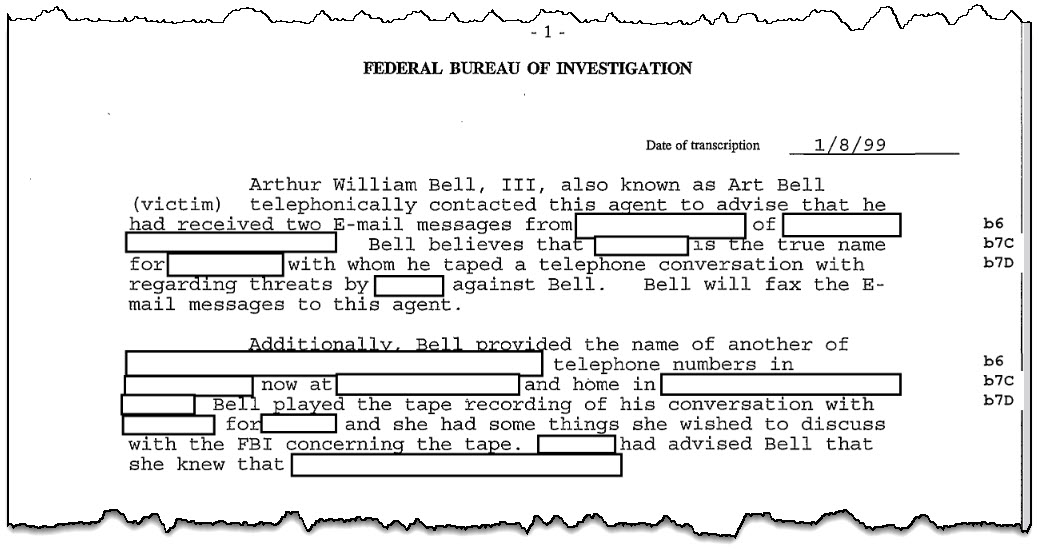Nobody likes a crying baby at 35,000 feet, and some people will spend anything just to block them out. Luckily, this year’s Prime Big Deal Days—running Oct. 7-8—include real deals on noise-cancelling headphones that won’t empty your entire travel fund. We’re talking lowest-ever prices on top picks, especially when it comes to ANC performance to shut the world up long enough for you to focus, nap, or just not lose your mind. These are some of the best picks from our travel headphones for airplanes guide, plus more. And right now, they’re even better values if you’re a Prime member.
Remember, if you don’t have an active Amazon Prime subscription, you can sign up for a trial at this link.
Apple AirPods Max USB-C — $429 (22% off, was $549)
Stan Horaczek
When they came out, the Apple AirPods Max weren’t just headphones—they were a flex. They broke the Bluetooth active noise-cancelling headphones price ceiling wide open. They’re no longer at the price pinnacle, but that doesn’t mean they’re cheap, so this discount will be appreciated just in time to upgrade your fall travel soundtrack. So there’s still kind of a flex, but more than that, they’re flex-ible. With immersive, adaptive spatial audio, luxurious materials, and ANC that hushes jet engines and officemates alike, these are the headphones that make every playlist sound editorial. The USB-C charging post unlocks lossless wired listening, and firmware updates keep making them smarter. Yes, they’re still hefty. Yes, the case is avant-garde. But for Apple users chasing hi-fi harmony that hands off effortlessly from iPhone to MacBook, the AirPods Max still hit all the right notes. But act fast, because this kind of discount ends faster than your favorite playlist!
Nothing Headphone (1) — $254 (15% off, was $299)
Stan Horaczek
The Nothing Headphone (1) is all about making a statement—visually and sonically. With its signature semi-transparent design and chunky yet clean UFO-cool curves, this over-ear stunner is impossible to ignore. It looks like it crashlanded from the future. But what’s even more noticeable once you put them on is a punchy, open soundstage (tuned for clarity and conviction by our friends at KEF) and ANC that hushes the chaos without muting the magic. Designed by ex-OnePlus co-founder Carl Pei, it blends futuristic flair with functional fidelity, making it ideal for commuters who care as much about style as they do about stereo separation. Touch controls glide, the battery is built for binging, and every detail—from voice clarity to spatial depth—feels tuned for Gen Z audiophiles with a taste for disruption.
Baseus Inspire XH1 — $109.99 (27% off, was $149.99)
Stan Horaczek
The Baseus Inspire XH1 is what happens when under-the-radar design meets overachiever aspirstions. Don’t let the chill matte finish fool you—inside, it’s Bose-informed brilliance all the way down. Think plush ANC that erases engine hums and office chaos, paired with warm, textured audio that gives your playlist its own zip code. The XH1 is light on weight and heavy on presence, so built for all-day wear without fatigue. Game mode drops latency, dual-device pairing keeps you in flow, and the price? Quietly disruptive. This isn’t just budget luxury—it’s hi-fi with hustle, tuned for folks who want their audio to slap, not shout.
Soundcore by Anker Space One — $69.99 (30% off, was $99.99)
Stan Horaczek
The Space One headphones from Soundcore by Anker are down to an all-time low. And they come with hybrid ANC that actually works. We’re not saying it’s Bose-level, but it’s shockingly close for less than 70 bucks. These headphones cut up to 98% of ambient noise, offer 40 hours of hi-res wireless playback with ANC on, and include LDAC support and customizable EQ via the app. There’s also wear detection, multipoint Bluetooth, and a collapsible frame. Flagship tricks, just at budget settings. If you’re commuting and want some peace, this is a solid seatmate.
Beats Studio Pro – Wireless Bluetooth Noise Cancelling Headphones — $169.95 (50% off, was $349.99)
Stan Horaczek
If you want all-day bass at half off, the Beats Studio Pro headphones are down to 50% off the $349 list. That’s a big drop for headphones that bring the boom and still play nice with both iPhones and Androids. You get solid ANC, 40-hour battery life, and USB-C wired lossless playback if you want to go hi-res (with detailed sound exhibiting 80% less distortion than standard Beats). Personalized Spatial Audio with head tracking adds a layer of fun without turning everything into a gimmick. No, they’re not studio monitors. But they’re comfortable, thumpy, and surprisingly flexible, offering crystal-clear calls. And come with two years of AppleCare+ … Whether you’re commuting or ignoring a coworker, these get the job done—just don’t wait if you want the best price.
Sennheiser Momentum 4 Wireless Headphones in White — $229.95 (49% off, was $449.95)
These headphones feel and sound as good as they look.
Sennheiser
ON SALE NOW
If you’re willing to spend more for a significantly refined sound signature, Sennheiser’s Momentum 4 Wireless headphones are $265.95 in white—their best price since before Christmas. It’s just one colorway, but that’s a real discount on Sennheiser’s top-tier travel cans. These aren’t just good-looking. They’re backed by the velvety house sound and obsessive quality control we saw firsthand at Sennheiser’s audiophile factory in Tullamore, Ireland—you can read about that here. The Momentum 4s carry that lineage with plush comfort, deep ANC, and a warm, articulate response that holds up across long hauls.
If that’s still too steep, the ACCENTUM Plus is $149.95 (was $249.95), or go leaner with the $99.95 ACCENTUM—both solid budget entries with Sennheiser DNA.
Sony WH-1000XM4 Wireless Premium Noise Canceling Overhead Headphones — $188 (46% off, was $348)
Stan Horaczek
The Sony WH-1000XM4 headphones are far from the newest, but they’re still some of the most beloved ANC cans out there. Because they still hold up with big, punchy sound, 30-hour battery life, and some smart noise cancellation. Wear detection? Multipoint? Custom EQ? Yep, it’s all in there. Plus, they’re light, comfy, and actually make airplane hum bearable. We reviewed them here and know plenty of people who still reach for them. If you want travel-ready headphones, this is the time to think ahead and skip the airport kiosk earbud regret.
And, thanks to the recently released WH-1000XM6, you can also enjoy a discount on last-generation WH-1000XM5 headphones, currently $298 (was $399).
Sonos Ace headphones — $298 (25% off, was $449)
Stan Horaczek
If you’ve made it this far … here’s another top-tier choice with a deep discount. Want to experience immersive spatial audio, whether you’re on the go or the household has gone to bed? Like Sonos soundbars, the Sonos Ace supports the latest Dolby Atmos surround sound tracks through Apple Music and the Sonos app. Whether you’re on Spotify or Netflix, they hit all the right notes—from Addison Rae to K-Pop Demon Hunters to an iconic motif on its 50th anniversary dun dun, duuunnn dunnn. Available in white or black, these headphones also offer flagship-level Adaptive ANC and physical comfort, 30 hours of battery life, and support for lossless listening via USB-C or wirelessly if you have an Arc Ultra soundbar. Thanks to a recent firmware update, you can even use a pair of Ace headphones with one Arc Ultra for a private Jaws viewing party for two.
Bowers & Wilkins Px8 — $479 (31% off, was $699)
Stan Horaczek
Perfect for on-the-go audiophiles, The Bowers & Wilkins flagship Px8 wireless headphones feature bespoke 40mm carbon cones—derived from the B&W 700 Series loudspeaker domes (and now trickled down to the Pi8 earbuds)—that are coupled with an optimized basket/motor system. This tilts the sound signature from body blows to landing right on the button. Separation and control are heightened and tightened, tempering unruly transients that can come across as excitement but threaten to trip up accuracy. Angled to attain a uniform alignment between every point of the ear and driver surface, these light-yet-rigid carbon cones are intended for low-distortion (THD+N <0.1%), high-engagement listening. Most impressive is that this precision-engineered, spacious audio is available wherever and whenever you need it, using Bluetooth for a solid connection with support for the SBC, AAC, and aptX Adaptive (with aptX Lossless) for maximum iOS/Android compatibility. There may be a newer version now, but all that means is that these already fabulous headphones are now available at an even more fabulous price.
Bose QuietComfort Ultra Headphones (Deep Plum) $285 (34% off, was $429)
The violet colorway is cool without going over the top.
Bose
The Bose QuietComfort Ultra Headphones offer more than just audio output—they’re a full-body exhale. With world-class ANC that hushes the chaos and spatial audio that lifts the mix around your skull like a halo, these headphones deliver immersive sound with hi-fi finesse. The fit is plush without pressure, the build sleek without screaming, and the 24-hour battery life? Chef’s kiss. You can fly cross-country without reaching for a charger. Along the way, multipoint pairing means your laptop and phone don’t have to fight for custody, and Snapdragon Sound support keeps everything crisp over Bluetooth. Whether it’s jazz at midnight or lo-fi at sunrise, these headphones make every moment feel like a well-mastered mood. And, at 30 percent off, this is one of the steepest discounts Bose offers all year on headphones that come in multiple colors to match “The White Album” or “Kind of Blue,” etc.
TwelveSouth AirFly Pro 2 Bluetooth Adapter — $49.99 (29% off, was $69.99)
Stan Horaczek
Need a way to get the best out of your headphones when you’re traveling? This diminutive dongle is your top travel accessory. It connects to the 3.5mm port on airplane seats, treadmills, and more, to transmit signal wirelessly and conveniently via Bluetooth 5.3 (with aptX HD). Connect up to two sets of headphones, so you can watch the same awful movie as family or friend. You can barely fit your body in that economy row, so loose cables are just asking for trouble. And when you arrive at your destination, it can act as a receiver so you can play your favorite tracks and podcasts in a rental car. This is the deluxe edition, so it also comes with a two-prong International Airline Adapter and a premium travel bag.
The post I test wireless headphones all year and these are my top picks on sale during Amazon’s Big Deal Days appeared first on Popular Science.
🛸 Recommended Intelligence Resource
As UAP researchers and tech enthusiasts, we’re always seeking tools and resources to enhance our investigations and stay ahead of emerging technologies. Check out this resource that fellow researchers have found valuable.
→ hotel-deals










